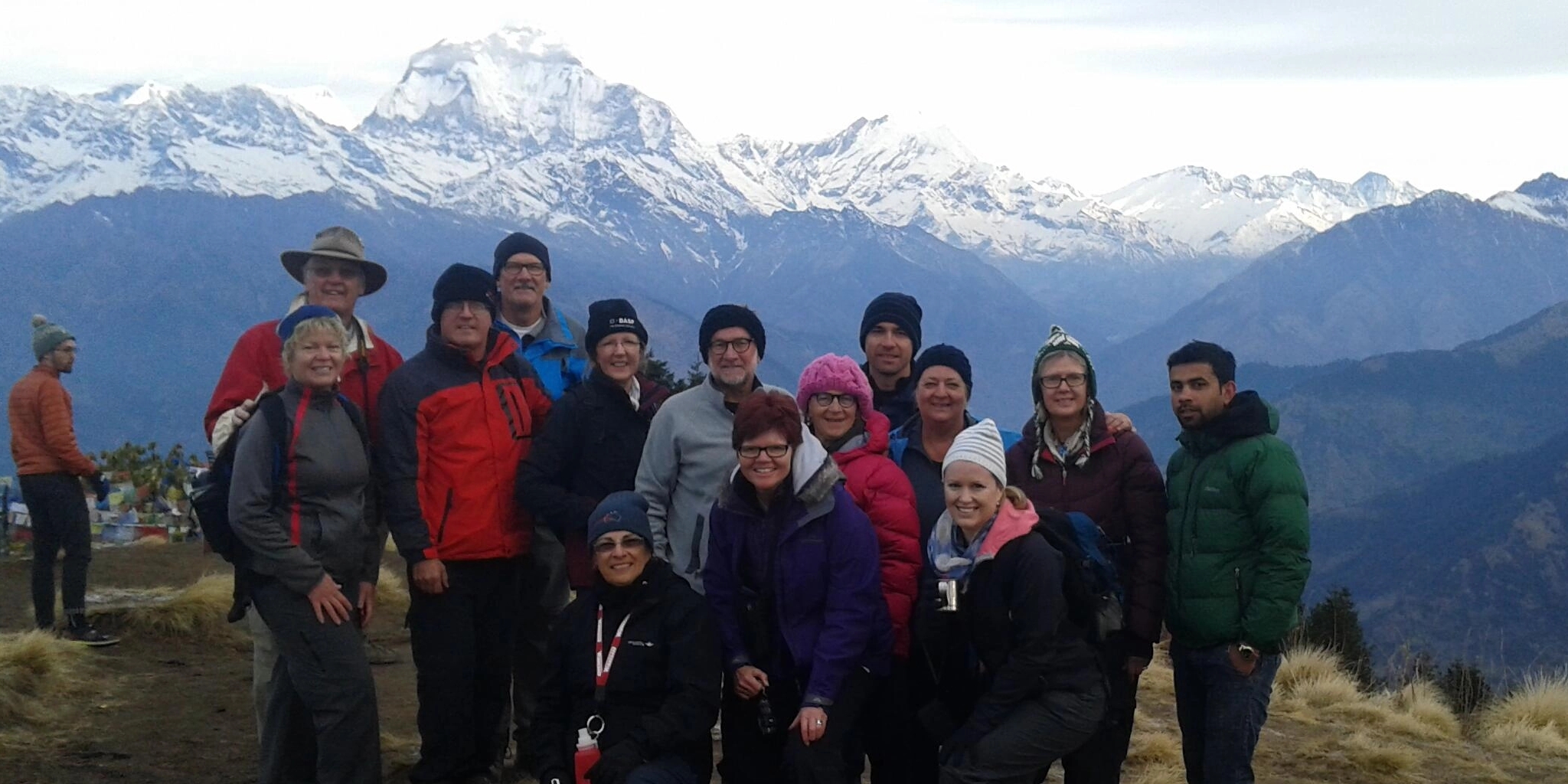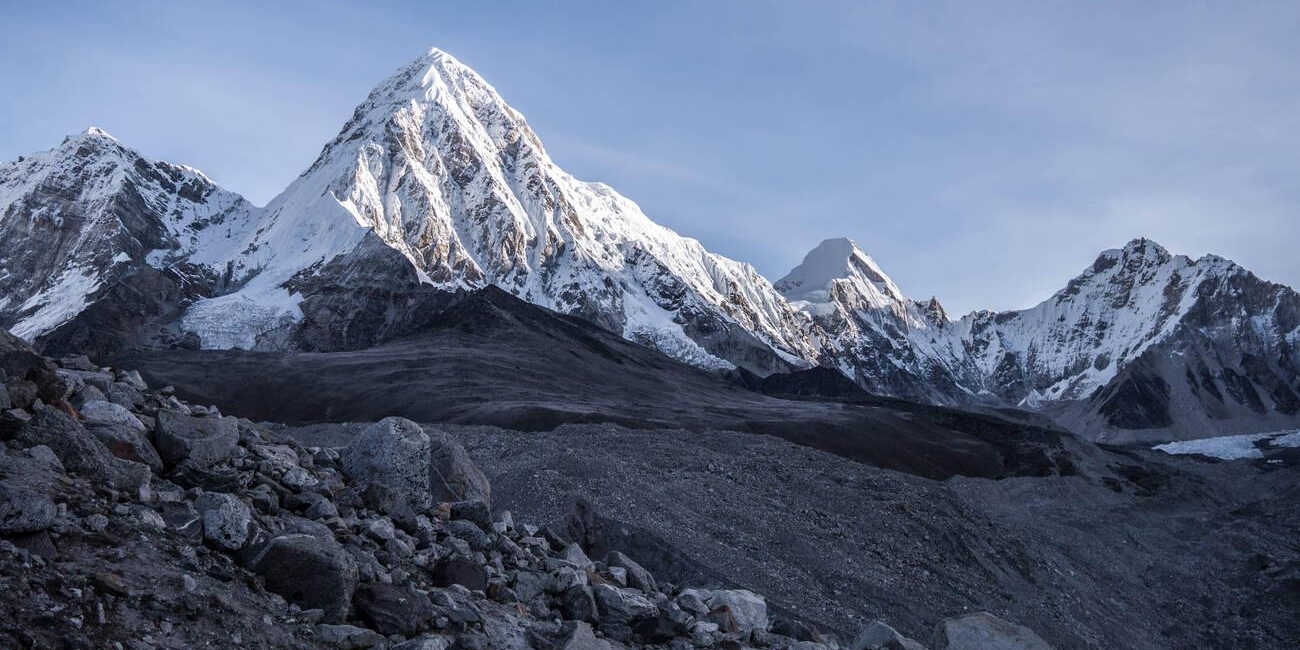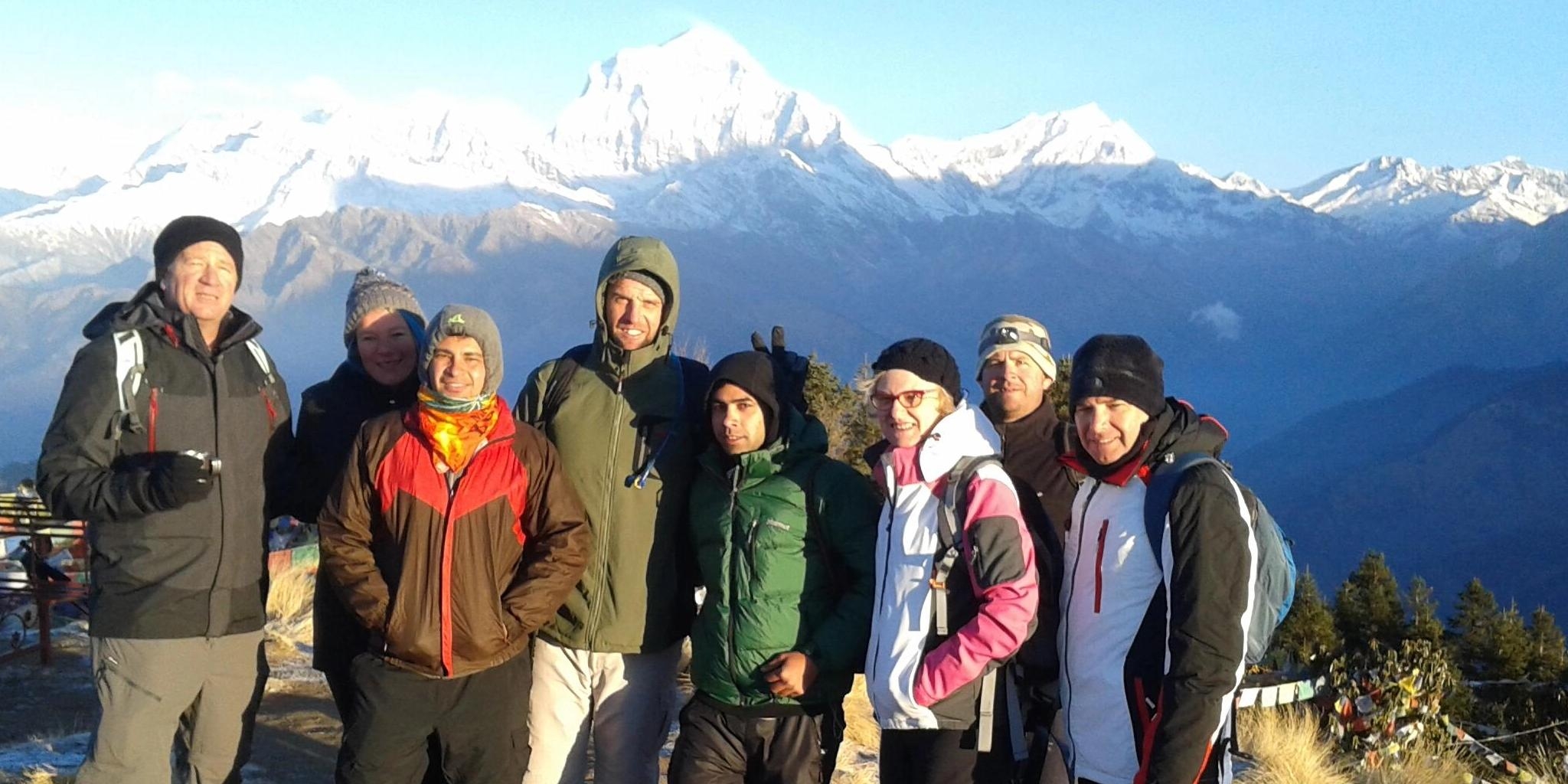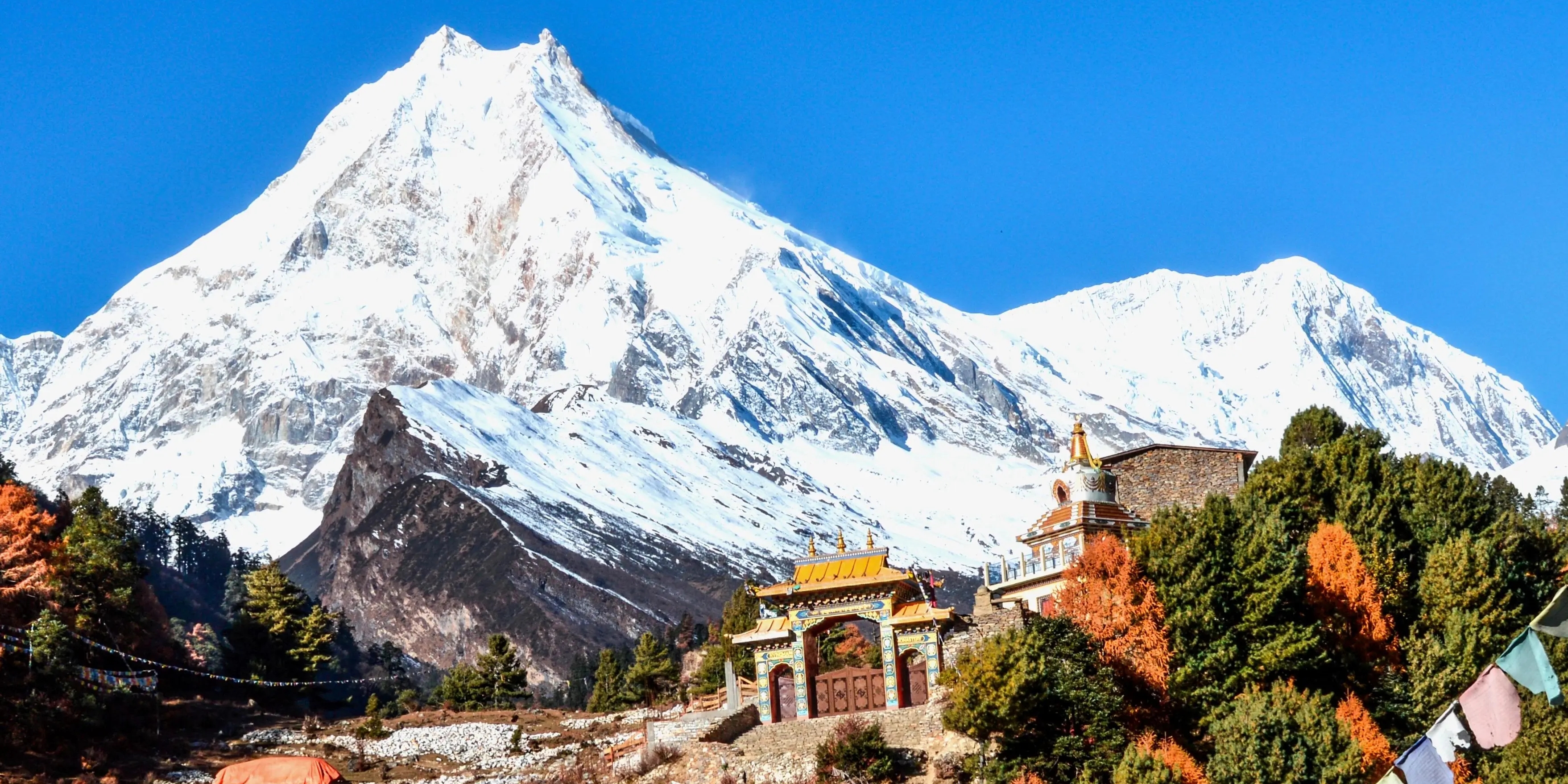


Published 29 Aug 2025
The Annapurna Base Camp (ABC) Trek is one of the most iconic and breathtaking trekking routes in Nepal. Nestled in the Annapurna mountain range, this trek offers an unparalleled blend of cultural richness, diverse landscapes, and panoramic mountain vistas. Whether you are a seasoned trekker or a beginner, the ABC trek is a perfect adventure to explore the heart of the Himalayas. Managed by experienced local guides from Rediscover Nepal Treks & Tours, this journey promises safety, comfort, and a memorable experience.
The trek takes you through lush subtropical forests, traditional Gurung villages, and vibrant rhododendron forests before reaching the base camp, where you are surrounded by towering peaks like Annapurna South, Hiunchuli, and Machapuchare (Fishtail). The trek is moderately challenging but accessible to fit individuals with basic fitness, offering a rewarding mix of natural beauty and cultural immersion.
Annapurna Base Camp is situated in the Annapurna Sanctuary, a high glacial basin located at 4,130 meters (13,550 feet) above sea level in the Annapurna massif of Nepal. The Sanctuary is encircled by several prominent peaks including Annapurna I (8,091m), Annapurna South, Hiunchuli, Machapuchare, and Gangapurna, making it a prime destination for mountain lovers.
Located in the Gandaki Province, the trek to ABC begins either from Nayapool or Pokhara, passing through charming villages such as Tikhedhunga, Ghorepani, and Chomrong. The Base Camp itself acts as a gateway for mountaineers attempting to scale the Annapurna peaks and is revered as one of the most spectacular trekking destinations globally.
Key Points:
The Annapurna Base Camp trek can be attempted year-round, but the best time to visit largely depends on weather and trail conditions. The most popular trekking seasons are Autumn (September to November) and Spring (March to May).
Choosing the right season ensures optimal visibility of mountain panoramas, pleasant trekking conditions, and a safer journey.
Key Points:
The Annapurna Base Camp trek typically takes around 7 to 14 days depending on your pace, acclimatization needs, and side excursions. The classic itinerary involves driving from Pokhara or Nayapool to the trailhead, followed by daily treks through diverse landscapes and villages, culminating in the base camp visit.
Rediscover Nepal Treks & Tours offers flexible itineraries, including a 14-day guided trek option that allows gradual acclimatization and includes rest days at key points like Ghorepani or Chomrong. The descent back is relatively quicker, but ample time is allocated for exploring local culture, hot springs at Jhinu Danda, and scenic viewpoints like Poon Hill.
Duration considerations include your fitness level, weather conditions, and interest in side trips, but the 10-14 day range ensures a comprehensive, enjoyable trek without rushing.
Key Points:
The Annapurna Base Camp (ABC) trek is often classified as a moderate difficulty trek, suitable for people with a reasonable level of fitness and no serious health issues. The trail combines gradual ascents and descents with occasional steep sections, particularly when approaching higher altitudes such as Ghorepani and the final climb to Annapurna Base Camp itself. While it doesn’t require technical climbing skills, trekkers need to be prepared for long walking hours, variable weather conditions, and uneven terrain.
One important factor in the trek’s difficulty is altitude. The trek reaches heights above 4,000 meters, where the air is thinner, making breathing more challenging and physical exertion tougher. Beginners can manage this trek if they train adequately before the trip and take the acclimatization process seriously. Many trekking companies, including Rediscover Nepal Treks & Tours, design itineraries with built-in rest days to allow your body to adjust and minimize altitude sickness risks.
The trek’s terrain varies from well-trodden dirt paths and stone steps to narrow forest trails, and during the monsoon season, it can become muddy and slippery. Therefore, a good level of stamina, balance, and endurance is essential. Overall, the trek is highly rewarding and accessible for many, but preparation is key for a safe and enjoyable experience.
Key Points:
One of the most critical aspects of the Annapurna Base Camp trek is coping with altitude. As you ascend from the lowlands at around 865 meters in Pokhara to the Base Camp at 4,130 meters, your body needs time to adjust to the decreasing oxygen levels. Rapid ascent without proper acclimatization can lead to Acute Mountain Sickness (AMS), which can cause headaches, nausea, dizziness, and in severe cases, life-threatening conditions.
Rediscover Nepal Treks & Tours emphasizes a gradual ascent with rest days built into the itinerary, especially after crossing 3,000 meters. For example, trekking to Ghorepani and spending an extra day for acclimatization is a common practice. During this time, you can enjoy Poon Hill’s sunrise views and allow your body to adapt to the higher altitude before continuing upward.
Other helpful acclimatization strategies include drinking plenty of water, avoiding alcohol, and ascending slowly. If symptoms of altitude sickness develop, it is vital to stop ascending and descend if they worsen. Trekkers are encouraged to listen to their bodies and communicate openly with guides to ensure safety throughout the journey.
Key Points:
Packing for the Annapurna Base Camp trek requires careful consideration of varying weather conditions and terrain. Since the trek crosses different climatic zones, from subtropical forests to alpine zones, layers are essential. A well-prepared trekking bag should include moisture-wicking base layers, insulating mid-layers such as fleece or down jackets, and waterproof outerwear to protect against rain and wind.
Footwear is one of the most important items—sturdy, broken-in trekking boots with good ankle support and grip are essential for comfort and safety on rocky and slippery paths. Additionally, warm gloves, hats, and thermal socks help combat cold temperatures, especially during early mornings and evenings.
Don’t forget essentials like a good quality sleeping bag rated for cold temperatures, a daypack for carrying water and snacks, trekking poles to reduce joint strain, sunscreen, sunglasses, and a personal first aid kit. Packing light is advisable, but never compromise on key gear that ensures your safety and comfort.
Rediscover Nepal Treks & Tours provides detailed pre-trek packing lists and advice tailored to the season and your itinerary, helping you prepare efficiently for the journey ahead.
Key Points:
Accommodation along the Annapurna Base Camp trek is primarily in teahouses—simple lodges run by local families offering basic amenities. These teahouses provide clean rooms with beds, shared bathrooms, and heating options during colder months. While accommodations may be modest compared to hotels, the warmth and hospitality of the Nepalese hosts create a welcoming atmosphere for trekkers.
Meals are typically Nepalese or Tibetan-inspired, including dal bhat (rice and lentils), momos (dumplings), noodles, soups, and fresh vegetables. Most teahouses also serve western dishes like pasta and pancakes to cater to international tastes. Staying hydrated is important, and boiled or filtered water is widely available, though many trekkers prefer to carry water purification tablets or filters.
Rediscover Nepal Treks & Tours partners with trusted teahouses and ensures trekkers have comfortable stays, even in remote locations. Special dietary requirements can be accommodated with prior notice, and guides assist in navigating food options to keep you nourished and energized throughout the trek.
Key Points:
Trekking in the Annapurna region requires a few essential permits, which help regulate tourism, preserve the natural environment, and support local communities. The two primary permits needed for the Annapurna Base Camp trek are the Annapurna Conservation Area Permit (ACAP) and the Trekkers’ Information Management System (TIMS) card.
The ACAP is issued by the Nepal government and grants access to the Annapurna Conservation Area, which spans over 7,629 square kilometers and includes the Annapurna Sanctuary. This permit ensures that the trekking activities align with conservation efforts and local development initiatives. The TIMS card acts as a registration for trekkers and enhances safety by allowing authorities to keep track of visitors in case of emergencies.
Rediscover Nepal Treks & Tours assists trekkers in obtaining these permits smoothly, either before arrival or upon reaching Pokhara or Nayapool. It is essential to carry these permits at all times during the trek, as officials frequently check them at checkpoints. Permits not only contribute to sustainable tourism but also enable trekkers to enjoy the region’s natural beauty responsibly.
In addition to these primary permits, visitors planning to fly to Lukla or enter other protected areas may require additional permits. It’s advisable to confirm permit requirements with your trekking agency to avoid last-minute hassles.
Key Points:
The Annapurna region is home to diverse ethnic groups, predominantly the Gurung and Magar communities, who have rich cultural traditions and warm hospitality. As you trek through villages like Ghorepani, Chomrong, and Tadapani, you’ll encounter traditional houses, local festivals, and unique customs that reflect centuries-old Himalayan lifestyles.
Respecting local culture and etiquette enhances your experience and fosters positive relationships with the communities you visit. It’s customary to greet people with a smile and a polite Namaste, a traditional gesture of respect. When entering homes or monasteries, always ask for permission and remove your shoes. Dress modestly, especially in rural areas, and avoid loud behavior or public displays of affection.
Photographing locals should be done respectfully—ask for permission beforehand and avoid taking pictures of religious ceremonies or sacred sites without approval. Supporting local businesses by purchasing handicrafts and eating at village teahouses also contributes to the livelihoods of these communities.
Rediscover Nepal Treks & Tours educates trekkers about cultural sensitivity and encourages responsible tourism practices, ensuring that your visit benefits both you and the local people.
Key Points:
Preparing well before your Annapurna Base Camp trek ensures a safe, comfortable, and unforgettable experience. First and foremost, prioritize your physical fitness by engaging in regular cardio and strength training exercises at least a few months before the trek. Conditioning your body for long hours of walking and uphill climbs will boost your endurance and enjoyment.
Stay hydrated throughout the trek and eat balanced meals to maintain energy levels. Carry a reusable water bottle and purification tablets to ensure safe drinking water. Listening to your body is critical—don’t push through symptoms of altitude sickness, and communicate openly with your guide from Rediscover Nepal Treks & Tours, who is trained to manage emergencies and offer support.
Packing smart is equally important—bring appropriate clothing layers, essential gear, and basic medications. Keep your valuables safe and carry some cash as ATMs are scarce on the trail. Remember to respect the environment by minimizing waste and following Leave No Trace principles.
Lastly, enjoy every moment of the trek—the spectacular landscapes, the welcoming villages, and the vibrant culture. Take plenty of photos, but also spend time soaking in the serenity of the Himalayas.
Key Points:

Embark on the adventure of a lifetime with Everest trekking in 2025, a journey that takes you through the heart of the Himalayas, offering breathtakin...

Nepal, the land of majestic mountains and spiritual serenity, is a dream destination for trekkers around the world. What sets Nepal apart, especially...

The Manaslu Circuit Trek is a spectacular adventure that takes trekkers through some of Nepal’s most breathtaking and remote landscapes. This route of...
